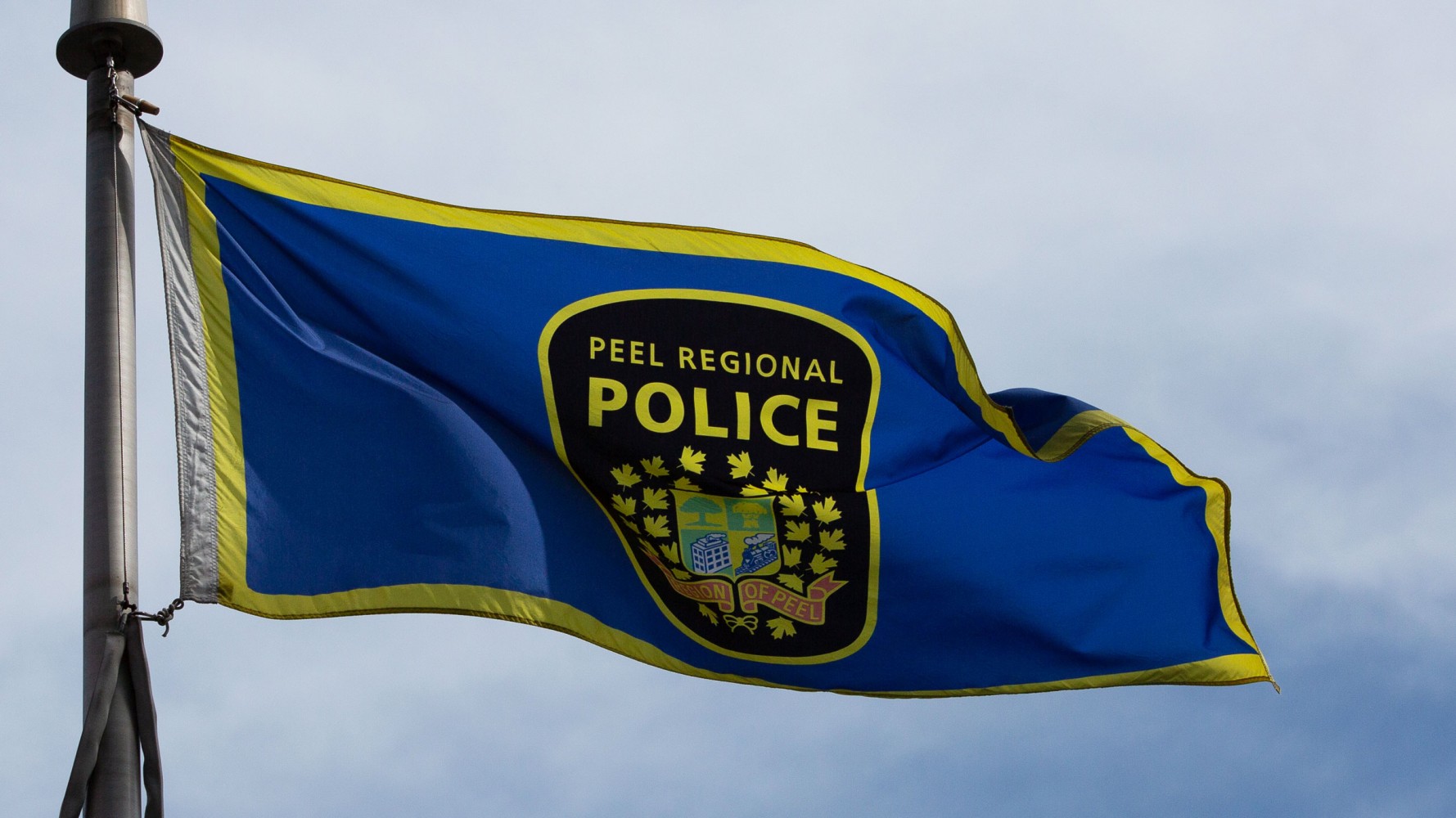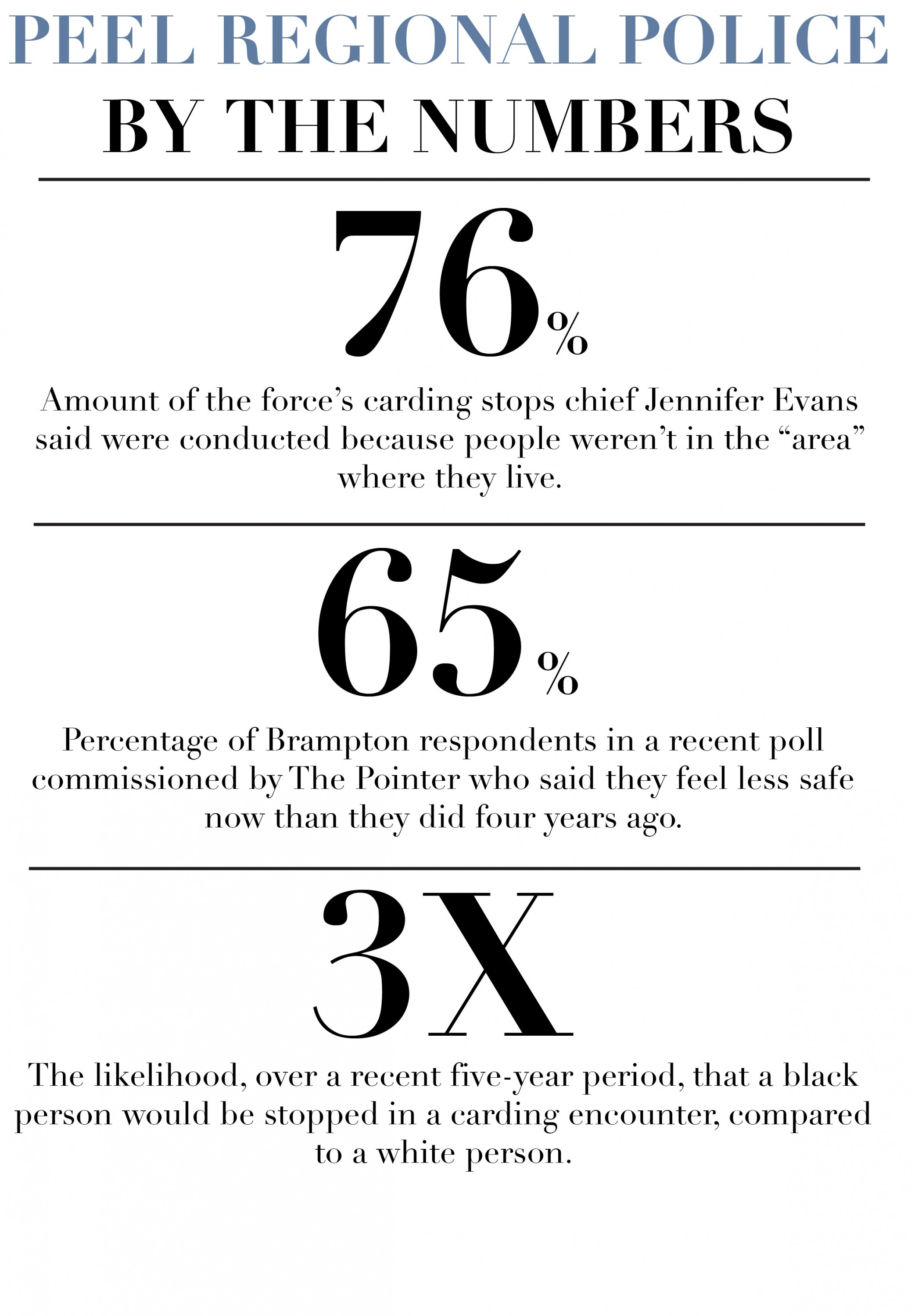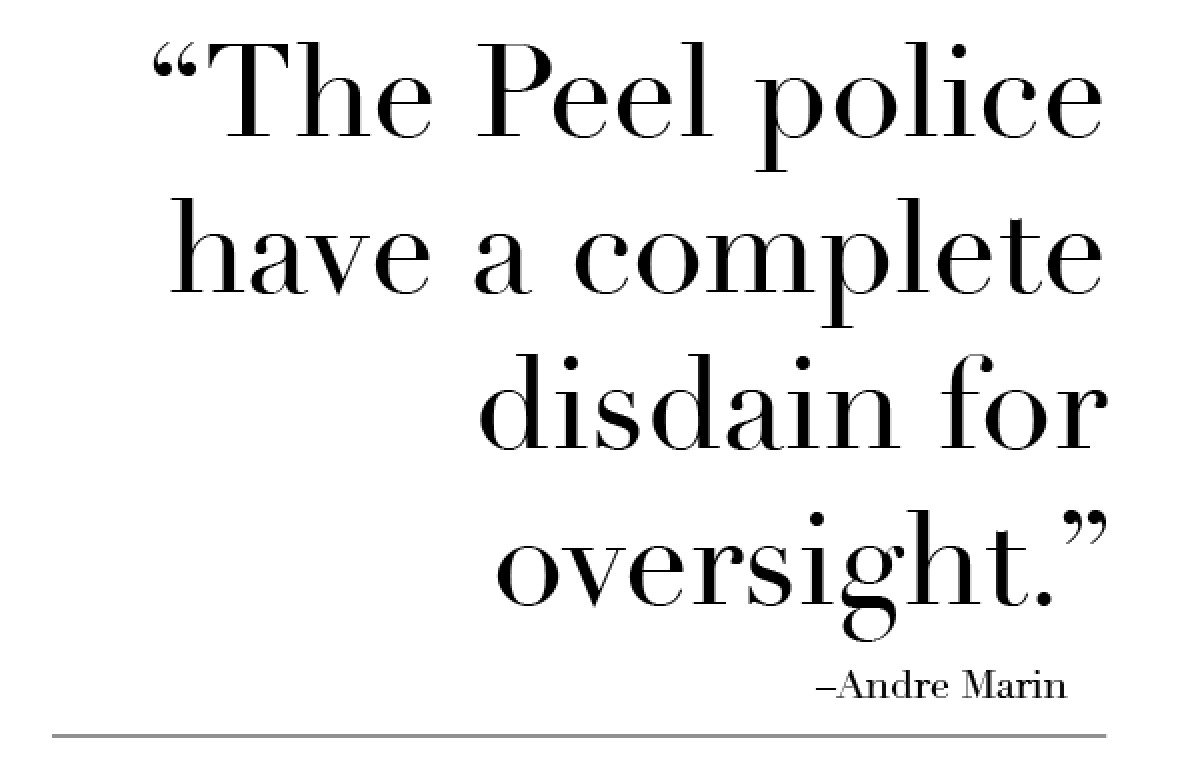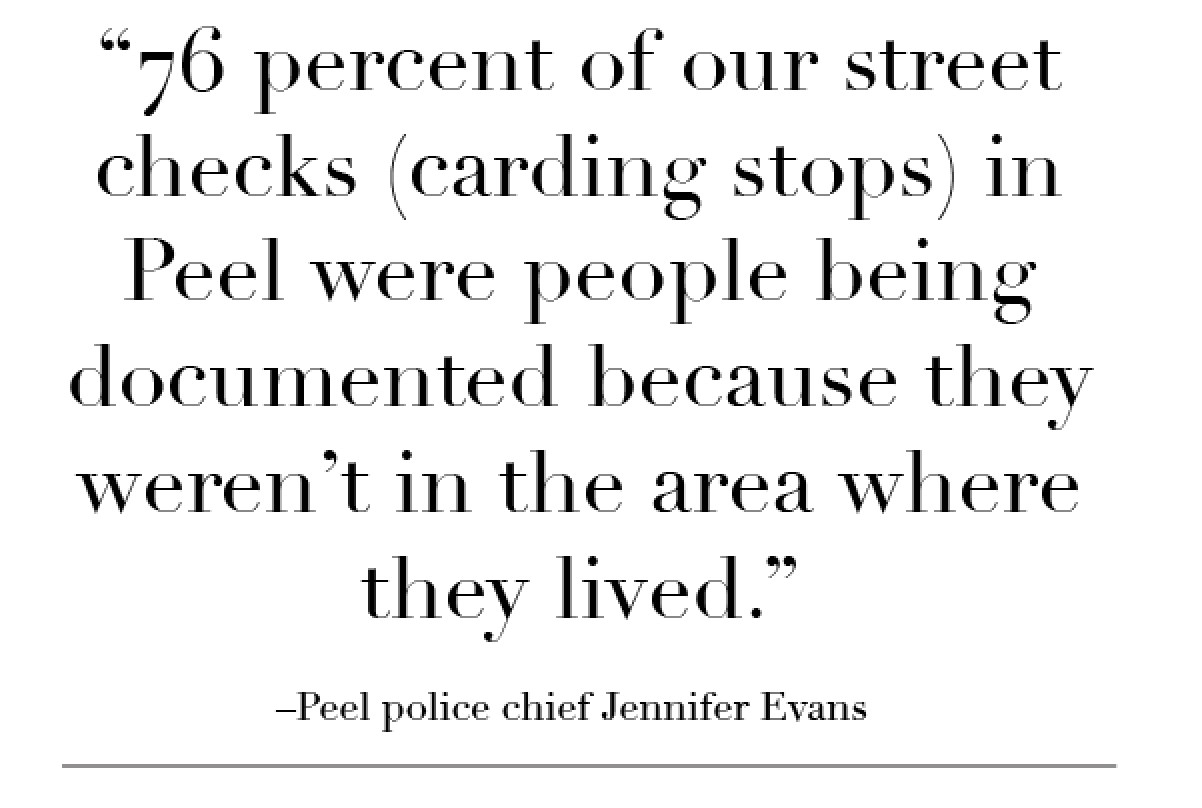
Is anyone policing Peel police? Part 2
In August 2013, an ambulance was called to a modern, grey and red-brick house on a tree-lined street in suburban Mississauga. Paramedics found the body of 40-year-old Caleb Harrison, a handsome father of two, lying in bed in the top-floor bedroom. He'd been strangled to death in his own home.
One of the paramedics realized he'd been to the house before, to pick up another corpse.
The bungalow had belonged to the Harrison family since 1975. Salesman Bill Harrison and his educator wife, Bridget, had raised Caleb, their adopted son, there.
By the time Caleb's body was found, both Bill and Bridget had died, in the same house, 63-year-old Bridget in 2010 and 64-year-old Bill in 2009.
In January 2018, Melissa Merritt and Christopher Fattore were found guilty in a Brampton courthouse for the murder of Caleb, while Fattore was also found guilty of killing Bridget. Merritt was Caleb's former wife, Fattore her common-law husband. Evidence raised suspicions that Fattore may have been involved in Bill Harrison's death as well. (He denies the allegations.) Merritt and Caleb had been embroiled in a bitter custody battle, the motive behind the murders.
By the time the verdict was announced, Harrison relatives were outraged by the failure of Peel Regional Police (PRP) to recognize much sooner that Fattore was murdering family members. "We are haunted by lingering questions about the investigative and forensic handling of the deaths of Bill and Bridget Harrison," they said in a statement.
Last month, the Office of the Independent Police Review Director (OIPRD), an agency that investigates public complaints about Ontario police, announced it was investigating both the Peel officers involved in the investigation and PRP Chief Jennifer Evans over cumulative failures in the Harrison murder case.
The Harrison murders raised alarming questions about whether Peel police have the capacity to carry out complex investigations. As detailed in Part 1 of The Pointer's two-part series exploring the PRP's track record, the force has been hit with numerous scandals, lawsuits and allegations of racism, corruption and police brutality in recent years.
There are also concerns the PRP has been bungling cases, accusing the wrong people of serious crimes, while officers lie in court and fabricate evidence, or assault civilians and then cover it up. Those responsible are rarely held to account.
A measure of the public unease is the response to an exclusive poll commissioned by The Pointer that surveyed 999 Brampton residents in the last two weeks of August. Asked whether they felt the Peel police were "doing a good job of keeping Brampton safe," the response was far from a ringing endorsement. Some 45 percent agreed, while 38 percent disagreed, and 17 percent answered "don't know." Asked "Overall, do you feel safer than you did four years ago?" 10 percent of those surveyed said yes, 26 percent said they felt about as safe as they did four years ago, and 65 percent said no.
Ranjit Khatkur, co-founder of the Peel Coalition Against Racialized Discrimination (P-CARD), and a long-time critic of the PRP, asks about Chief Evans: "When will she respond to all the questions about another possible reason for the shocking crime in Brampton, that her force has been wracked with misconduct problems and is ill-equipped to use modern, progressive, sophisticated ways to combat crime, with the trust of the community?"

* * *
The Harrison murders underline the concerns of the PRP's critics.
In 2009, Bridget Harrison came home one evening and found Bill's lifeless body in their downstairs bathroom, with the bathroom door locked and lights in the house extinguished. There were abrasions on Bill's neck.
The coroner did not see evidence of foul play. But when a pathologist examined his body, he found no evidence of a natural cause of death. Bill was in good health. The pathologist did find several injuries, including a large bruise on Bill's scalp and a fractured sternum.
Yet the inexperienced pathologist ruled out foul play and suggested Bill's death might be due to "acute cardiac arrhythmia." The Peel police did not question his conclusions, despite Bridget's questions about why her husband would lock the bathroom door from the inside when he was home alone, and why the lights were out. There was no evidence he had taken his own life.
The Peel homicide bureau was not given the case.
A year later, Bridget herself was found dead at the bottom of the main stairs in the house, only feet from where her husband's body had been discovered. Her corpse lay in an unusual position for someone who'd taken a fall. Pathologists found injuries and other evidence suggesting she'd been strangled.
Bizarrely, Peel's homicide bureau wasn't assigned to investigate her death, either. The Peel criminal officers working the case spent only two weeks on it before being assigned other duties. Caleb, meanwhile, had told police he was engaged in a bitter custody battle with his ex-wife, Melissa Merritt.
It wasn't until Caleb himself was found dead that the Peel homicide bureau finally began to look seriously into the potential involvement of Merritt and Fattore. The couple quickly became the main suspects.
Even then, police bungled aspects of the investigation. Fattore and Merritt were arrested in 2014. Two years later, their lawyers went to court and asked that crucial evidence and statements be thrown out on the grounds of Charter of Rights violations, saying the detectives had not cautioned the couple of their rights before they made statements, and that police had made unlawful searches of the couple's property and phones. A judicial ruling, before excluding some evidence, noted that "there is a pattern of disreputable, misleading and negligent police conduct associated with Charter breaches in this case," pointing out that "senior officers were involved."
Despite these errors, the pair were found guilty.
* * *
Failing to spot a murder under your nose is one thing. Accusing a person, without solid evidence, of a murder he didn't commit is quite another. But that's exactly what Peel police did to Eric Morgan.
In 2006, Morgan was a 39-year-old promoter who held a birthday party for himself at a Brampton restaurant. At 4 a.m., one of the guests, Melvyn Spence, was leaving the building when he was confronted by three men, who ran him down, shot and killed him in the parking lot. They then fled in an SUV.
In 2009, Peel police arrested gang members and charged them with Spence's murder. But Sean Dewart, one of Morgan's lawyers, says the evidence against the men was weak. "The charges were falling apart," Dewart says. "The case was cold."
Then, one of the key eyewitnesses changed her story, suggesting Morgan might have been involved in the shooting. Morgan had never been a suspect, because eyewitnesses placed him inside the club at the time of the shooting, and he didn't the fit description of the shooter: He was short, light-skinned, with a full head of braided hair. In contrast, the best eyewitness described the shooter as being dark-skinned, balding and over six feet tall.
Peel homicide detectives quickly changed course and set out to build a case against Morgan. They faced one big problem: his alibi.
Employing a highly controversial interrogation method called the Reid Technique, which often involves wearing down witnesses to get them to change their stories, the detectives set out to pressure the witnesses who had earlier placed Morgan inside the club at the time of Spence's murder.
 Brian Cox, Morgan's best friend, had said Morgan was handing out cake when someone rushed into the club to say Spence had been shot. Cox was asked to go to a division house, where homicide detectives interrogated him for eight hours without any food or drink. "The interview turned into a relentless onslaught," said a judge in one ruling, describing Cox as being slowly broken down psychologically. The officers yelled at him and threatened him with obstruction of justice charges to make him change his statement, which he eventually did.
Brian Cox, Morgan's best friend, had said Morgan was handing out cake when someone rushed into the club to say Spence had been shot. Cox was asked to go to a division house, where homicide detectives interrogated him for eight hours without any food or drink. "The interview turned into a relentless onslaught," said a judge in one ruling, describing Cox as being slowly broken down psychologically. The officers yelled at him and threatened him with obstruction of justice charges to make him change his statement, which he eventually did.
One by one, key witnesses recanted their statements, many after being threatened by Peel officers.
In 2010, Morgan was charged with killing Spence. He would spend three and a half years in detention. He went on trial In 2012, but the evidence against him was so weak the jury couldn't reach a decision. A mistrial was declared.
The following year, at his new trial, the key witness against Morgan finally admitted she wasn't sure if he was the shooter (she had initially had a described a man who looked different). The Crown and judge instructed the jury they must find Morgan innocent, and he was released.
Morgan, who suffers from PTSD and struggles with depression, has since launched a lawsuit against Peel police seeking $25 million in damages. "He is a shell of a person, a changed man," says David Shulman, one of his lawyers.
"If this investigation is typical," adds Dewart, "then the people of Peel have something to be worried about."
But that wasn't the end of the matter.
Earlier this year, the Special Investigations Unit (SIU) charged Daniel Johnstone, a former senior Peel homicide detective, with sexually assaulting a fellow police officer at a restaurant in the spring of 2017, an alleged assault that occurred before he was promoted to inspector. This was not the first time Johnstone had faced accusations of aggressive behavior. In 1991, after uttering a homophobic slur, Johnstone and another officer beat up two men outside a bar while off duty. They were convicted of assault and fined.
Johnstone was also one of the key detectives involved in the Morgan investigation, threatening eyewitnesses and pressuring them to change their stories. A 2013 court ruling found that Johnstone was "verbally aggressive and confrontational" with Brian Cox and used a "loud and controlling voice." His threats included telling them he would charge them with obstruction of justice unless they changed their stories. Johnstone would often accuse the witnesses of lying and lead them towards accusing Morgan.
Today, Johnstone is on paid leave while the charges of sexual assault against him are being processed.
* * *
When cases do go to court, some Peel police officers have been caught lying on the witness stand, often resulting in criminals going free.
In June 2014, Peel police arrested Lowell Somerville, a Brampton resident, of drug dealing. During the investigation, the officers searched his storage locker. Later, Somerville found that a wood statue of Tony Montana, the main character in the movie Scarface, was missing from the locker, along with jewelry and cash. He told his lawyer. She asked for security video of the storage unit, which showed four Peel officers entering and leaving carrying a large object under a sheet.
On the stand, all four officers denied taking the statue. The judge didn't believe them, said they were lying, and describing their behaviour as "not only profoundly disappointing but shocking" and "demonstrably inconsistent with what a fair justice system requires." She threw out the charges against Somerville. This spring, the four officers were charged with perjury.
In June 2010, a 17-year-old woman showed up at Peel police station saying she had been forced to work as a prostitute by a man named Courtney Salmon. Salmon had been accused of the same crime before but had walked away from charges when another woman refused to testify against him.
Peel officers went to a motel in Brampton and arrested Salmon.
The officers searched his room and collected personal items from Salmon, including his wallet. Later, a Peel officer, Const. George Wang, claimed that two pieces of fake ID Salmon had given the young woman were found in the wallet. Wang confirmed this at the preliminary hearing and his notes reflected it as well.
But there was a problem: another Peel officer said he had been handed the fake ID by the woman when she first came to the police station, and therefore it could not have been found in Salmon's wallet. She said Salmon had given her the fake ID so she could appear to be over 18 and work in sex and strip clubs.
Salmon faced a bevy of charges, including human trafficking and living off the avails.
But at his trial in 2011, things fell apart. When Wang was confronted by the fact that his notes said he found the fake ID in Salmon's wallet, as opposed to having been brought by the woman to the station herself, he suddenly changed his story and claimed there was a mix-up in documenting evidence. Moreover, three other officers at the station did not document the fact that she had turned over the fake ID, which they were supposed to do.
Salmon's lawyer argued that the Peel officers had either attempted to plant evidence on Salmon that connected him to the young woman, "or concocted a scheme under which it would be falsely recorded, and testified to, that the documents were found in Mr. Salmon's wallet."
In the end, Ontario Superior Court Judge Douglas Gray agreed with the defence, saying "on a balance of probabilities it is more likely than not that Constable Wang and one or more police officers fabricated evidence to make it appear that the false identification was found in Mr. Salmon's wallet at the time of his arrest." Gray's finding was that the failure of other officers to document the ID when the woman brought it to the division house was evidence they had colluded to plant evidence. As for the one officer who noted she had brought the ID with her, his notes were not part of the disclosure given to Salmon's lawyer.

In throwing out the charges against Salmon, Gray noted: "It would be difficult to conceive of conduct that would more distinctly shock the conscience of the community than the fabrication of evidence by the police." Salmon was released but later re-arrested for doing the very same crime.
Then there was the assault of Quang Hoang Tran.
In spring 2002, four violent home invasions were carried out by a small gang of nine men in Peel. They often brutalized their victims. One of the alleged gang members was Tran. When he heard in 2003 that police were looking for him, he gave himself up to Hamilton police. The PRP then sent two officers to pick him up and bring him back to Peel.
On the drive, Tran later testified, the two officers tried to get him to confess. But he said nothing. When they arrived at a PRP division house, Tran said, the two officers shoved and punched him before putting him in an interview room not equipped with video equipment. Instead, they continued to assault the man, trying to get him to talk.
Then, according to Tran, Const. Will Vander Wier punched him in the ribs and smashed him in the jaw, breaking it in two places and causing permanent damage to Tran's mouth.
The officers tried to cover up the assault by pressuring Tran to say, on video, that he had hit his chin on the table. He refused.
"They couldn't have misconducted themselves more," says Najma Jamaldin, one of Tran's lawyers. "They beat him up because he wished to remain silent. They then covered up what they did."
In 2006, Tran went to trial for his role in the home invasions. His lawyers asked for the case to be thrown out on grounds police had assaulted him. On the stand, the officers lied, saying Tran's injuries were self-inflicted. But the trial judge found the medical evidence "overwhelming" that Tran's injuries were caused by the officers. Nonetheless, Tran was convicted of his role in the home invasions.
Tran appealed that decision. The appeal court threw out his conviction due to the police assault. In 2010, the SIU charged Vander Wier with beating Tran. Three years later, a jury acquitted the constable. In 2015, Vander Wier was promoted to sergeant.
Then there is the Dinh case.
In 2009, the Peel drug squad conducted an undercover operation focusing on two men, one of whom was Tan-Hung Dinh. An undercover officer arranged to buy a large amount of cocaine from Dinh at a Super 5 motel in Mississauga. When Dinh showed up, the officers pulled him into a room. They found a kilo of cocaine in his car.
In the motel room, Dinh later said, he was severely beaten by Peel drug squad officers. Dinh claimed, as related in a court ruling: "Five to six police officers punched and kicked him for approximately two minutes," and "at one point one of the officers climbed on the nightstand and tried to jump on him, but Mr. Dinh was able to roll out of the way. Another officer...pulled out a gun, pressed it against his head, and threatened to kill him." Dinh sustained numerous injuries.
Then the officers drove to Dinh's family home to search for more drugs. They were supposed to wait for a search warrant before entering the home. But they went in without a warrant and found two more kilos of cocaine and 2,000 grams of ecstasy.
Dinh's brother asked the police to leave the house because they didn't have a warrant. On his cellphone, he recorded one of the officers responding angrily, saying Dinh "was caught today with three kilos of cocaine and a pill press with ecstasy", thus confirming the officers had entered the house and found the drugs there before they had a warrant.
When the case went to trial in 2011, the officers denied under oath that they'd beaten Dinh or entered his home without a warrant. But the medical evidence and the brother's tape recording convinced the judge they were lying. She threw out the evidence seized at Dinh's house, but also noted that the officers "essentially colluded and then committed perjury, en masse. This must be addressed in a concrete way."
But it wasn't: the five Peel officers involved in the Dinh case were never disciplined or charged with perjury.
* * *
Ian Scott, who led the SIU from 2008 until 2013, has had his own experiences with the sometimes bizarro world of Peel police accountability.
In 2010, a woman approached the PRP to report that a Peel officer who had just retired from the force had sexually assaulted her back in the 1980s. Peel police referred the case to the SIU, which began an investigation.
But then, bizarrely, Mike Metcalf, Peel's chief of police at the time, took Scott and the SIU to court to prevent him from investigating the case.
"It was very odd," says Scott. "They had referred it to us and then said we had no jurisdiction." In 2011, a judge threw out Metcalf's lawsuit.
Despite the litany of problems observers have noted about the PRP, there seems to be little effective oversight of the force outside the courts.
"The Peel police have a complete disdain for oversight," says Andre Marin, a former Ontario Ombudsman and former head of the SIU. "You saw that with (Chief Jennifer Evans) and carding."
Chief Evans has fought long and hard to retain carding, or "street checks" a practice that involves police randomly stopping people and demanding their personal information, without reference to a particular crime being investigated. When demand rose for evidence of its usefulness, Evans was able to cite only six instances over more than 35 years in which carding had helped to solve crimes.
In 2016, Evans gave an interview on CBC Radio in response to the controversy. "We talk about people being stopped under suspicious circumstances while they're not in their areas, so 76 percent of our street checks in Peel were people being documented because they weren't in the area where they lived," she said, "and for some reason officers were not coming up with reasons why they were in that area."
"What's wrong with being in an area where you don't live?" asked Matt Galloway. The CBC host seemed puzzled by her comment.
The chief's comments reflect a "top-down" culture within the force that puts the 74 percent of Brampton residents who identify as visible minorities on notice, says Ranjit Khatkur, co-founder of the anti-racism group, P-CARD. "Could someone, anyone, Chief Evans, any of her senior officers, a criminology expert or cultural anthropologist, anyone at all please explain to the people of Brampton how a police officer can spot a random person walking down the street or in a park or at a store, and instantly figure out that they're not in their area?"

Yet Evans was never held to account for such comments by Peel's police services board, the civilian oversight body. It's true that more recently, the board has made attempts to hold Evans to account, without great effect.
In 2016, a new chair was appointed: Amrik Ahluwalia, a businessman of South Asian heritage. Along with Bonnie Crombie, mayor of Mississauga, and Linda Jeffrey, mayor of Brampton, the board began to push for change. Ahluwalia emerged as a public opponent of Evans, fighting her on carding and forcing an audit of the force to probe possible racism in its hiring practices.
Evans responded by waging a campaign against Ahluwalia behind closed doors. She threatened to pull herself and senior officers out of a police board workshop. An association of senior Peel officers joined in the campaign, demanding Ahluwalia step down as chair because, they said, he was not defending the force against criticisms. He stayed on at the time but was replaced earlier this year. (Ahluwalia declined to discuss Evans or the PRP when contacted by The Pointer.)
Yet, last year, the board agreed to extend Evans' contract for two more years. There seems to be little political stomach for challenging the chief.
Which is little solace for people who have experienced loss at the hands of the Peel police force. "They have inexperienced officers who don't have proper training," says La Tanya Grant, cousin of Jermaine Carby, a black man shot and killed by Peel police in 2014 under controversial circumstances. She adds: "I miss my cousin. He was a great guy."
Submit a correction about this story


